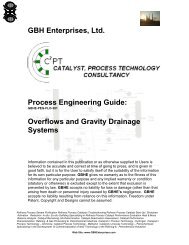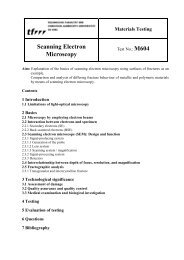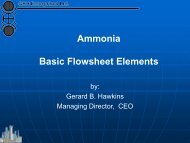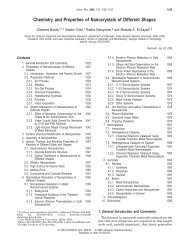Vulcan Series Chloride Removal Technology VGP CRT 2000 and ...
Vulcan Series Chloride Removal Technology VGP CRT 2000 and ...
Vulcan Series Chloride Removal Technology VGP CRT 2000 and ...
You also want an ePaper? Increase the reach of your titles
YUMPU automatically turns print PDFs into web optimized ePapers that Google loves.
10.0 Re-contactor / Separation Drum<br />
This stage will basically determine whether the fixed bed HCl trap downstream will<br />
perform or not. The idea is to operate as to minimize the 'heavies' content of the net<br />
hydrogen ex catalytic reformer. This is done via the highest pressure <strong>and</strong> lowest<br />
temperature possible at this stage. It would be good to have the separation drum running<br />
at a temperature lower than ambient. This is seldom achieved mostly because existing<br />
plant has not been designed with the optimum operation of HCl absorbers in mind.<br />
<strong>Vulcan</strong> <strong>Series</strong> <strong>VGP</strong> <strong>CRT</strong> <strong>2000</strong> / 3000: Analytical Procedures<br />
What analytical methods are used to measure chloride concentrations in vapor <strong>and</strong> liquid<br />
phases down to 0.1-ppm levels? Do you have any specific information (i.e. analyzer type<br />
etc.) on these methods?<br />
For detection of chlorides in liquid hydrocarbon streams we recommend the following<br />
methods:<br />
For detection of inorganic chlorides<br />
Use of silver nitrate back titration on the water washings of a known quantity of the<br />
hydrocarbon liquid. Full details are available on request from GBHE C 2 PT.<br />
GBHE C 2 PT experience indicates that this type of analysis is reliable for detecting ppmv<br />
quantities of inorganic chlorides but less reliable for sub-ppmv levels. Thus it is OK for<br />
quick, regular checking that the chloride has not broken through the bed.<br />
For detection of organic <strong>and</strong> inorganic chlorides<br />
Use a GC <strong>and</strong> Hall detector system. The GC system splits up the different types of<br />
chloride so that they can be separately identified by the Hall detector. The Hall detector<br />
converts all the chlorides present to HCl (H2 is added) <strong>and</strong> this is then specifically<br />
detected by the Hall detector (which is a conductivity cell).<br />
The detector/GC system typically costs about $ 45,000 <strong>and</strong> can be supplied by the<br />
American company Varian.<br />
For detection of organic chlorides - Solids & Liquids<br />
.<br />
Total Organic Halogen Measurement System<br />
Model TOX - 10 ( AOX /POX/EOX )<br />
Mfgr. by: Mitsubishi Kasei Corp.<br />
Refinery Process Stream Purification Refinery Process Catalysts Troubleshooting Refinery Process Catalyst Start-Up / Shutdown<br />
Activation Reduction In-situ Ex-situ Sulfiding Specializing in Refinery Process Catalyst Performance Evaluation Heat & Mass<br />
Balance Analysis Catalyst Remaining Life Determination Catalyst Deactivation Assessment Catalyst Performance<br />
Characterization Refining & Gas Processing & Petrochemical Industries Catalysts / Process <strong>Technology</strong> - Hydrogen Catalysts /<br />
Process <strong>Technology</strong> - Ammonia Catalyst / Process <strong>Technology</strong> - Methanol Catalysts / process <strong>Technology</strong> – Petrochemicals<br />
Specializing in the Development & Commercialization of New <strong>Technology</strong> in the Refining & Petrochemical Industries<br />
Web Site: www.GBHEnterprises.com








